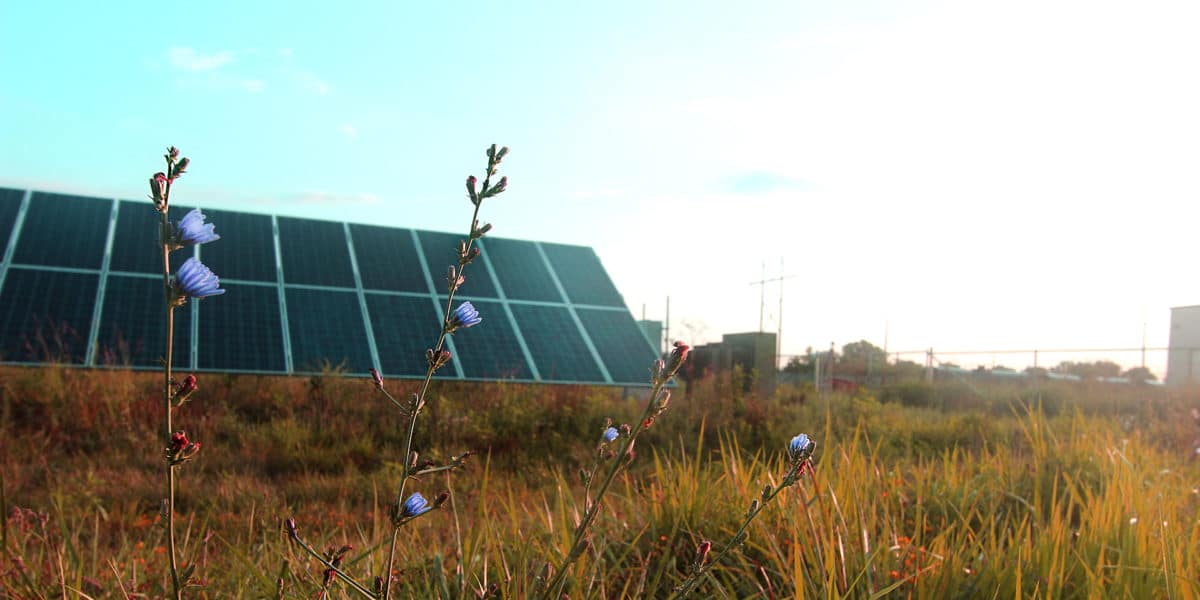The Public Utilities Commission (PUC) of Ohio is questioning whether American Electric Power’s (AEP) 900 MW of renewable energy – including a 400 MW solar plant – is actually a “need”. This question has come up in the Ohio utility’s plan to “rate base” its customers to build the facilities.
Rate basing is a mechanism that utilities have traditionally used to get their customers to pay for the up-front costs of building conventional power plants through their electric bills, but Florida utilities including Tampa Electric and Florida Power and Light have begun to rate base solar plants as well.
Evidentiary hearings began on January 15. And in a filing on January 8 (pdf), a utility specialist at the PUC clarified the traditional definition of “need” for regulated utilities:
Having determined that supply is sufficient to meet the needs of Ohio Power’s customers and to ensure that resource adequacy is maintained, Staff therefore finds that the Company has not demonstrated a need to construct any additional resources at this time.
The PUC staffer noted that definition of need was very simply focused and mostly based upon whether or not there is ample available generation resources to feed the population of Ohio. It used the below chart to show examples of projected needs, and how actual electricity demand fell within those bounds:

The staffer noted that grid operator PJM Interconnection was responsible for ensuring resource adequacy across all of the state of Ohio, including the AEP load zone, and the most recent reliability auctions for 2021/22 ended with a reserve margin well in excess of required targets.
The position of the PUC was very focused on a specific definition of “customer need”. When asked by the commission whether the demand of customers to have renewable energy, or considerations of environmentalism, were valid considerations – the PUC stated that they did in fact support those types of actions, however, these were not “customer needs” but instead “customer demands”.
The commission asked for the PUC’s position on other renewable energy benefits, such as reducing electricity imports, promoting economic development in the state, maintaining fuel diversity, and providing price stability. The PUC’s response really put the ball in the commission’s court:
Staff believes that the purported benefits associated with the proposed projects do not relate to need as Staff would define the term. However, Staff certainly recognizes that various parties, including the Company, may define what constitutes a need in a different manner than Staff and may find these benefits compelling. It will be the Commission who will ultimately decide whether or not to broaden the definition of need.
The 900 MW of renewable energy facilities were part of a 2015 settlement with the Sierra Club.
This content is protected by copyright and may not be reused. If you want to cooperate with us and would like to reuse some of our content, please contact: editors@pv-magazine.com.









By submitting this form you agree to pv magazine using your data for the purposes of publishing your comment.
Your personal data will only be disclosed or otherwise transmitted to third parties for the purposes of spam filtering or if this is necessary for technical maintenance of the website. Any other transfer to third parties will not take place unless this is justified on the basis of applicable data protection regulations or if pv magazine is legally obliged to do so.
You may revoke this consent at any time with effect for the future, in which case your personal data will be deleted immediately. Otherwise, your data will be deleted if pv magazine has processed your request or the purpose of data storage is fulfilled.
Further information on data privacy can be found in our Data Protection Policy.